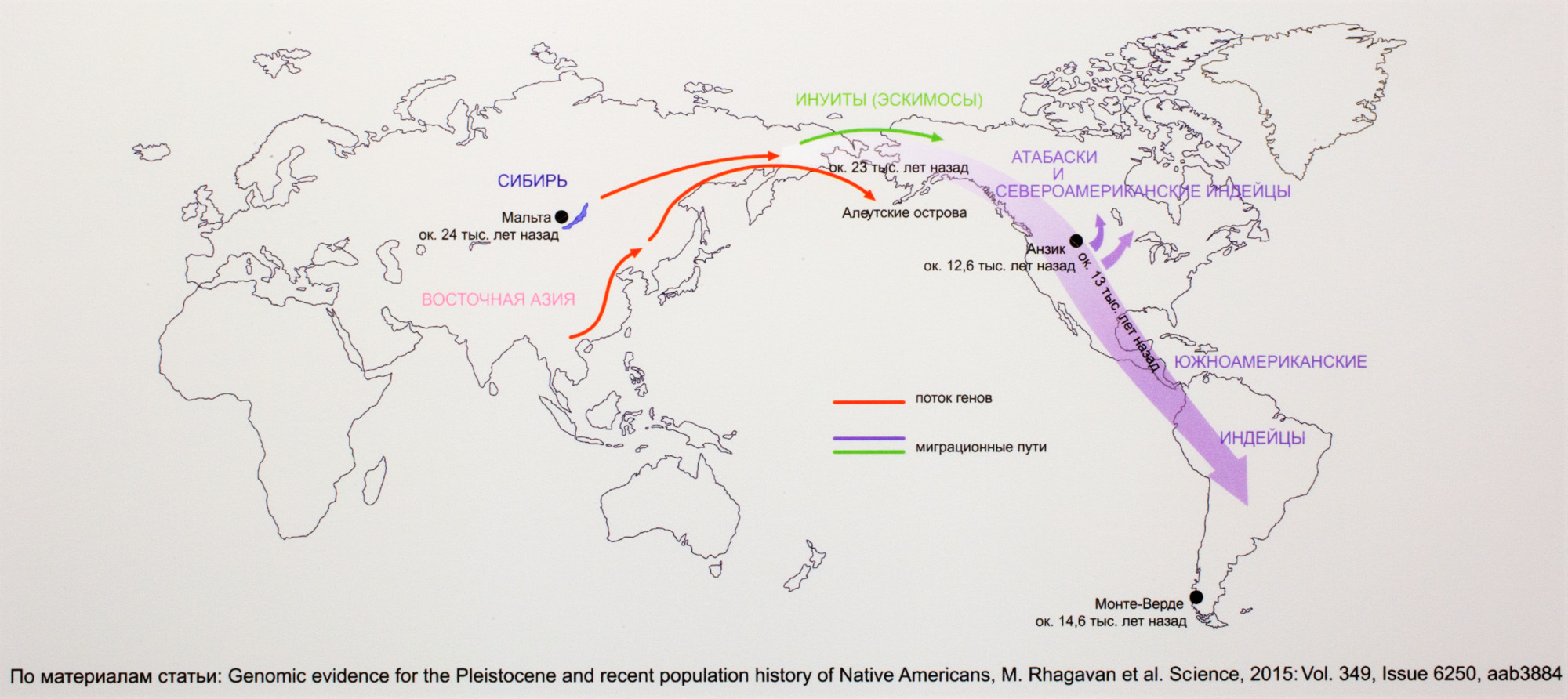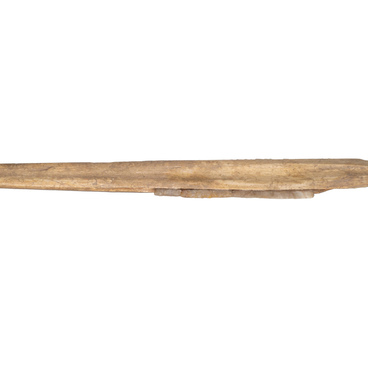The Museum of Local History displays a Map of Early Human Migration and the Exploration of the Americas
It was first published in the article ‘Genomic evidence for the Pleistocene and recent population history of Native Americans’ in Science Magazine which remains one of the most authoritative scientific journals in the world today. The map was translated into Russian by the curators of Irkutsk Regional Museum of Local History.
The article was published in 2015, it was written by a team of authors — more than a hundred leading scientists from Europe, North and South America and Russia. The text described the genetic studies of the last two decades, which established that the ancestors of modern Native Americans were natives of Siberia. The scientists have come to the conclusion that about 23,000 years ago they crossed into North America via a land ‘bridge’, which existed during the Paleolithic period. Now this area is submerged underwater, forming the present-day Bering Strait.
Arrows on the map indicated the ways of genes passing down through generations, as well as the people physical migration from one area to another. In addition, the authors of the article marked the most important archaeological sites that helped to collect data and develop the research topic. Among them the map shows the ancient site of Malta, which was located in the Usolsky district of the Irkutsk region.
Malta was discovered, in 1928, by Mikhail Gerasimov, later to become a famous archaeologist and anthropologist, who was at the time an employee of Irkutsk Museum of Local History. During the excavations he found stone tools, ‘Paleolithic Venuses’ — figurines with a female silhouette, as well as the oldest Paleolithic burial with inventory in Siberia. This particular discovery — children’s remains with art objects and tools -became an important link for those who studied the history of the North America settlement. The hypothesis of Siberians entering the continent by land is considered the most reliable today.
It was first published in the article ‘Genomic evidence for the Pleistocene and recent population history of Native Americans’ in Science Magazine which remains one of the most authoritative scientific journals in the world today. The map was translated into Russian by the curators of Irkutsk Regional Museum of Local History.
The article was published in 2015, it was written by a team of authors — more than a hundred leading scientists from Europe, North and South America and Russia. The text described the genetic studies of the last two decades, which established that the ancestors of modern Native Americans were natives of Siberia. The scientists have come to the conclusion that about 23,000 years ago they crossed into North America via a land ‘bridge’, which existed during the Paleolithic period. Now this area is submerged underwater, forming the present-day Bering Strait.
Arrows on the map indicated the ways of genes passing down through generations, as well as the people physical migration from one area to another. In addition, the authors of the article marked the most important archaeological sites that helped to collect data and develop the research topic. Among them the map shows the ancient site of Malta, which was located in the Usolsky district of the Irkutsk region.
Malta was discovered, in 1928, by Mikhail Gerasimov, later to become a famous archaeologist and anthropologist, who was at the time an employee of Irkutsk Museum of Local History. During the excavations he found stone tools, ‘Paleolithic Venuses’ — figurines with a female silhouette, as well as the oldest Paleolithic burial with inventory in Siberia. This particular discovery — children’s remains with art objects and tools -became an important link for those who studied the history of the North America settlement. The hypothesis of Siberians entering the continent by land is considered the most reliable today.



